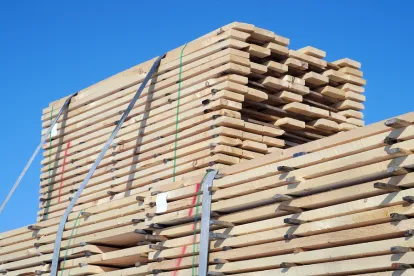After months of waiting, the IRS and the Treasury Department have released a second set of proposed regulations (the “Second Tranche”) relating to the opportunity zone provisions enacted as part of the Tax Cuts and Jobs Act of 2017 (the “OZ Statute”). The OZ Statute presents a unique opportunity for taxpayers to defer and/or eliminate tax liability and, at the same time, spur much needed economic development in underserved communities. (Click here and here for a more detailed summary of the three primary tax incentives available to taxpayers under the OZ Statute).
The OZ Statute initially was met with great enthusiasm from a wide variety of groups, including investors, funds, real estate developers and operating businesses, as well as state and local governments that have one or more opportunity zones within their jurisdictions. Despite this initial enthusiasm, however, the OZ Statute was short on details, leaving the IRS and Treasury with the difficult task of filling in the gaps. As a result, the “opportunity” remained more of a “hope” while guidance was being drafted.
The IRS and the Treasury Department released an initial set of proposed regulations (the “First Tranche”) on October 19, 2018. The First Tranche answered some of the questions left open in the OZ Statute but, in many instances, caused even more issues with respect to the OZ Statute’s application. Thus, those who were otherwise enthusiastic about the OZ Statue continued to be hesitant to actually move forward.
The Second Tranche represents the IRS’s and Treasury’s newest attempt to provide the necessary guidance to clarify portions of the OZ Statute. While questions remain, the Second Tranche, which generally can be relied upon currently, provides sufficient clarity that in all likelihood will unleash a wave of investments in opportunity zones.
Set forth below is an overview of some (but certainly not all) of the more salient provisions of the Second Tranche, particularly those that relate to operating businesses and real estate projects and to funds looking to invest in such opportunities.
Glossary of Terms
Due to the number of defined terms used throughout the OZ Statute, please note the following abbreviations used herein:
- QOZ: Qualified Opportunity Zone
- QOF: Qualified Opportunity Fund
- QOZP: Qualified Opportunity Zone Property
- QOZB: Qualified Opportunity Zone Business
- QOZBP: Qualified Opportunity Zone Business Property
Summary of Certain Provisions of the Second Tranche
I. Provisions Related to QOZBs
A. Active Conduct of a Trade or Business
The OZ Statue provides that at least 50% of a QOZB’s total gross income must be from an active trade or business. However, neither the OZ Statute nor the First Tranche defines what constitutes “an active trade or business.” As a result, guidance was needed to clarify the types of activities that constitute the active conduct of a trade or business.
The Second Trance confirms that whether an activity constitutes the active conduct of a trade or business is determined under the generally applicable federal income tax principles. As a result, the ownership and operation (including leasing) of real property used in a trade or business can be an active trade or business. However, the Second Tranche also confirms that merely entering into a triple-net-lease with respect to real property owned by a taxpayer is not the active conduct of a trade or business by such taxpayer.
B. 50% of Gross Income Derived from a QOZB
As described above, the OZ Statue provides that at least 50% of a QOZB’s total gross income must be from an active trade or business. The First Tranche expanded this requirement by specifying that the gross income must be derived from the active conduct of a trade or business in the QOZ. This expanded requirement may not have posed issues for real estate projects, but caused significant consternation for operating businesses.
The Second Tranche provides much needed guidance on how to comply with the “within the QOZ” aspect of the 50% requirement by setting forth three safe harbors, as well as a facts and circumstances test:
- The Service Test: At least 50% of the services performed (based on hours) for such business by its employees and independent contractors (and employees of independent contractors) are performed within the QOZ. This safe harbor is intended to address a business located in a QOZ that primarily provide services, such as a startup business that develops software applications in a campus located in the QOZ, even though the vast majority of its sales are or will be to consumers outside of the QOZ.
- The Amount Paid for Services Test: At least 50% of the services performed for the business by its employees and independent contractors (and employees of independent contractors) are performed in the QOZ, based on amounts paid for the services performed. For example, if the startup described under the first safe harbor also utilized a service center located outside of the QOZ, and the working hours of employees and independent contractors performed at the service center are greater than the hours worked at the campus located in the QOZ, but the business pays 50% of its total compensation to those employees and independent contractors located in the QOZ, then this safe harbor will be satisfied.
- The Conjunctive Test: The third safe harbor is a conjunctive test concerning tangible property and management or operational functions performed in a QOZ, permitting a trade or business to use the totality of its situation to meet the requirements of the 50% test. Specifically, this safe harbor will be met if (1) the tangible property of the business that is in a QOZ and (2) the management or operational functions performed for the business in the QOZ are each necessary to generate 50% of the gross income of the trade or business. For example, if a construction company’s headquarters are in a QOZ, its officers and employees manage the daily operations of the business (occurring within and outside of the QOZ) from its headquarters, and all of its equipment and supplies are stored within the headquarters or elsewhere within the QOZ, then the management activity and the storage of equipment and supplies in the QOZ are each necessary to generate 50% of the gross income in a trade or business.
Finally, businesses not satisfying any of the three safe harbors nevertheless may meet the 50% requirement based on a general test if, based on all the facts and circumstances, at least 50% of the gross income of a trade or business is derived from the active conduct of a trade or business in the QOZ.
C. Use of Intangibles
The OZ Statute provides that a “substantial portion” of the intangible property of a QOZB must be used in the active conduct of a trade or business. However, neither the OZ Statute nor the First Tranche defined the term “substantial portion” for this purpose. The Second Tranche clarifies this requirement by providing that substantial portion for purposes of the intangible property requirement means at least 40%.
D. Working Capital Safe Harbor
Under the OZ Statute, one of the requirements for qualification as a QOZB is that less than 5% of the average of the aggregate unadjusted bases of property held by the entity be attributable to “nonqualified financial property,” which includes a variety investments, but excludes reasonable amounts of working capital held in cash, cash equivalents, or debt instruments with a term of 18 months or less. This requirement caused concerns as to whether holding significant amounts of cash, cash equivalents, and short-term debt instruments during the development of a project in a QOZ would violate the “reasonable working capital” exception to the 5% limit on nonqualified financial property.
The First Tranche eased these concerns by providing a safe harbor for working capital that will be used for the acquisition, construction, and/or substantial improvement of tangible property in a QOZ. Specifically, committed property will be considered “reasonable working capital” if (1) there is a written plan that identifies such property as held for the acquisition, construction, or substantial improvement of tangible property in a QOZ, (2) there is written schedule consistent with the ordinary start-up of a trade or business for the expenditure of such property within 31 months of the receipt by the business of the property, and (3) the trade or business substantially complies with such written schedule.
The Second Tranche also includes this safe harbor, but make two helpful changes. First, the written designation for planned use of working capital now includes not only the acquisition, construction, and or substantial improvement of tangible property, but also the development of a trade or business in the QOZ – a nod to the fact that businesses need working capital to pay operational startup expenses as well as acquisition and construction costs. Second, exceeding the 31-month period does not violate the safe harbor if the delay is attributable to waiting for government action (e.g., a construction permit) if the application is completed during the 31-month period.
II. Provisions Related to QOZBP
A. Definition of “Substantially All” for Certain Purposes
The term “substantially all” is used but not defined several times in the OZ Statute. In addition to clarifying the meaning of substantially all for purposes of intangibles (discussed above), the Second Tranche helpfully provides guidance in the remaining contexts, including:
- 70% for purposes of the requirement that substantially all the tangible property owned or leased by a QOZB be QOZBP (which is consistent with the definition provided in the First Tranche);
- 70% for purposes of the “use in the QOZ” requirement that must be met for tangible property to be QOZBP;
- 90% for purposes of measuring a QOF’s holding period of QOZP; and
- 90% for purposes of measuring the holding period of a QOZB of tangible property as QOZBP.
B. Original Use of Tangible Property Acquired by Purchase
The OZ Statute states that in order for tangible property to be QOZBP, either (1) the original use of such property in the QOZ must commence with the QOF or (2) such property must be substantially improved (i.e., improvements equal to the acquisition cost of such facility). The Second Tranche clarifies that “original use” of tangible property generally commences on the date when the property is first placed in service in the QOZ for purposes of depreciation or amortization.
C. Original Use and Substantial Improvement of Land; Vacant Buildings
The Second Tranche explains that the requirement that the “original use” of tangible property in the QOZ commence with the QOF is not applicable to land. Likewise, unimproved land that is within a QOZ and acquired after December 31, 2017 from an unrelated taxpayer is not required to be “substantially improved” for purposes of the OZ Statute. However, to prevent potential speculative land purchasing with no plans for immediate improvements (i.e., “land banking”), the Second Tranche clarifies that land can be treated as QOZBP only if it is used in a trade or business of a QOF or a QOZB. Thus, unimproved land held for mere investment will not be classified as QOZBP. Moreover, anti-abuse rules may apply to treat unimproved land that was acquired to achieve inappropriate tax results as non-qualifying property for purposes of the OZ Statute.
In addition, responding to commenters who advocated for a rule that would provide that property that has been unused for some period of time could be considered “original use” property not requiring substantial improvement, the Second Tranche provides that the prior usage of a property acquired after December 31, 2017 from an unrelated taxpayer can be disregarded if it has been vacant for at least five years. This clarification will be helpful for developers and businesses that wish to purchase mothballed or otherwise shuttered facilities that do not require substantial improvements (i.e., improvements equal to the acquisition cost of such facility).
D. Substantial Improvement Continues to be On an Asset-by-Asset Basis; Comments Requested
The Second Tranche continues to provide that the determination of whether the substantial improvement for tangible property requirement has been satisfied is made on an asset-by-asset basis. However, recognizing that this determination could create a potential trap for operating businesses with significant numbers of diverse assets, the IRS and Treasury are requesting comments on the possibility of eliminating the asset-by-asset test in favor of an aggregation approach.
E. Safe Harbor for Testing Use of Inventory in Transit
The Second Tranche clarifies that inventory (including raw materials) of a trade or business does not fail to be used in a QOZ solely because the inventory is in transit from a vendor to a facility of the trade or business that is in a QOZ, or from a facility of the trade or business that is located in a QOZ to customers not located in the QOZ. This safe harbor is another example of the IRS’s and Treasury’s attempt to make the Second Tranche more practical for purposes of operating businesses.
F. Treatment of Leased Tangible Property
Under the OZ Statute, for tangible property to be QOZBP, such property must, among other things, be acquired by purchase after December 31, 2017. However, for purposes of determining whether a business is a QOZB, the OZ Statute provides that substantially all of the tangible property owned or leased by the business be QOZBP.
Because of the statutory reference to both owning and leasing in the definition of QOZB, but not in the definition of QOZBP, commenters expressed concern as to whether tangible property that is leased by a QOZB can satisfy the requirement of QOZBP. Similar questions arose with respect to whether tangible personal property leased directly by a QOF could be treated as satisfying the 90% test set forth in the definition of QOF.
The Second Tranche acknowledges that the OZ Statute’s purpose of spurring investment in QOZs is agnostic as to whether a business purchases or leases the property. As such, the Second Tranche provides that tangible property leased after December 31, 2017 can be counted for purposes of satisfying the 90% test relevant to the definition of “QOF” and for purposes of the 70% test for purposes of determining whether a business is a QOZB.
Further, the Second Tranche provides that leased tangible property is not subject to the “original use” requirement, meaning that the lessee does not have to substantially improve such property. Moreover, leased tangible property does not need to be acquired from an unrelataed lessor to the QOF or QOZB as long as the lease is a “market rate lease” (required for all leases to qualify under the OZ Statute). However, in the event of a lease between related parties, leased tangible property is not treated as QOZBP in the following cases: (1) at any time the QOF or QOZB makes a prepayment to the lessor (or a person related to the lessor) relating to a period of use of the leased tangible property that exceeds 12 months, or (2) the lessee does not become the owner of tangible property that is QOZBP and that has a value not less than the value of the leased personal property. In this regard, the Second Tranche includes an anti-abuse rule to prevent the use of leases to circumvent the substantial improvement requirement for purchases of improved real property.
What’s Next?
Treasury is accepting comments to the Second Tranche in advance of a public hearing schedule to occur on July 9, 2019. Whether any of those comments or other revisions will be included in a third set of proposed Regulations (which Treasury has indicated may not be needed), or in a final set of Regulations, is to be determined. In addition, a bipartisan group of lawmakers is advocating to revise the OZ Statute in order to (1) include additional reporting requirements on QOFs to ensure that the policy objectives of the OZ Statute are being furthered and (2) potentially extend the December 31, 2026 mandatory income recognition date to reflect the delay in having Regulations that provide the desired certainty. Regardless of how either of those processes turn out, because the Second Tranche goes a long way towards answering many of the questions raised by the OZ Statute, it is likely that many of those initially interested in taking advantage of this opportunity will now have enough confidence in the applicable rules to proceed in earnest.




 />i
/>i

